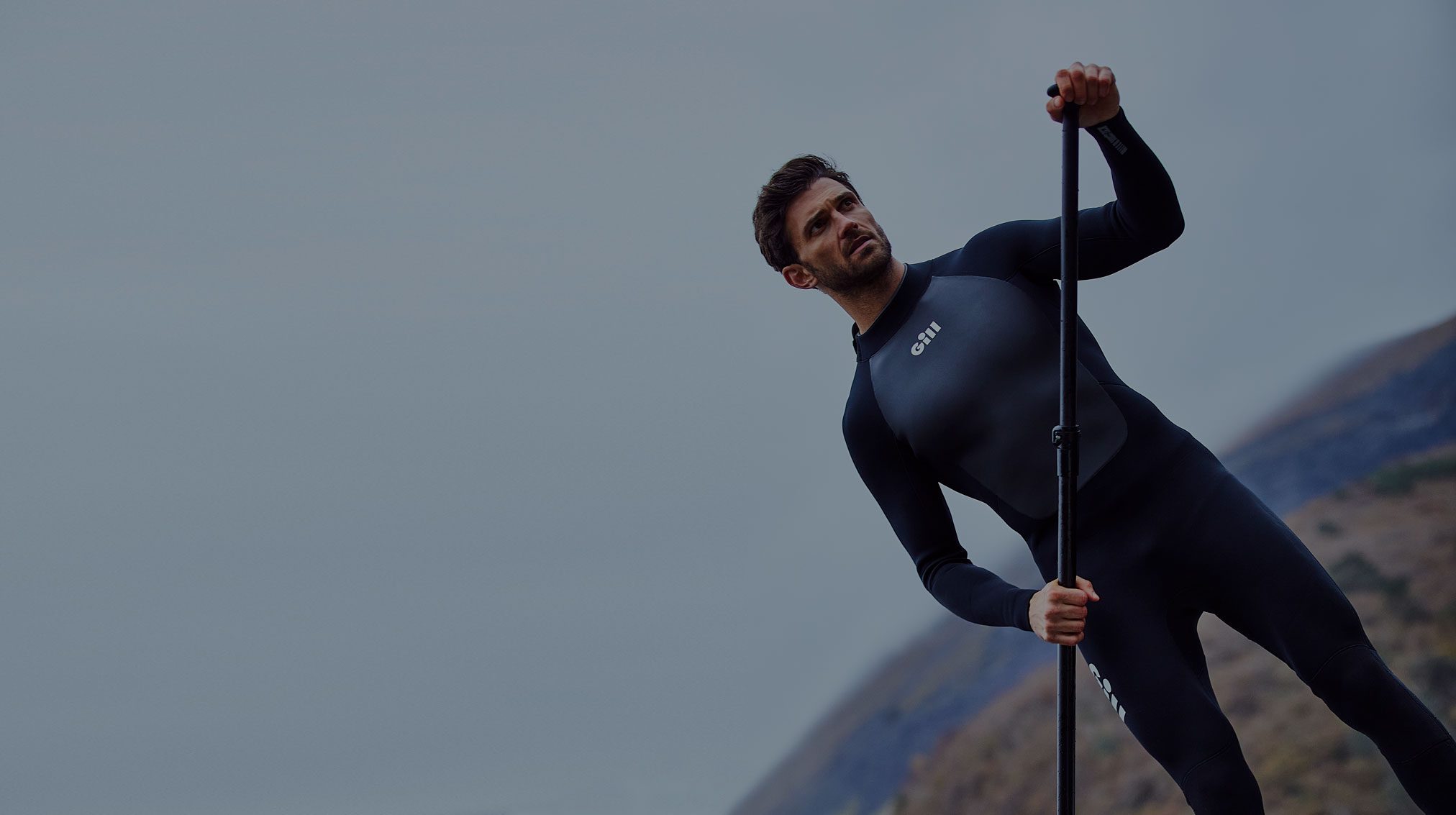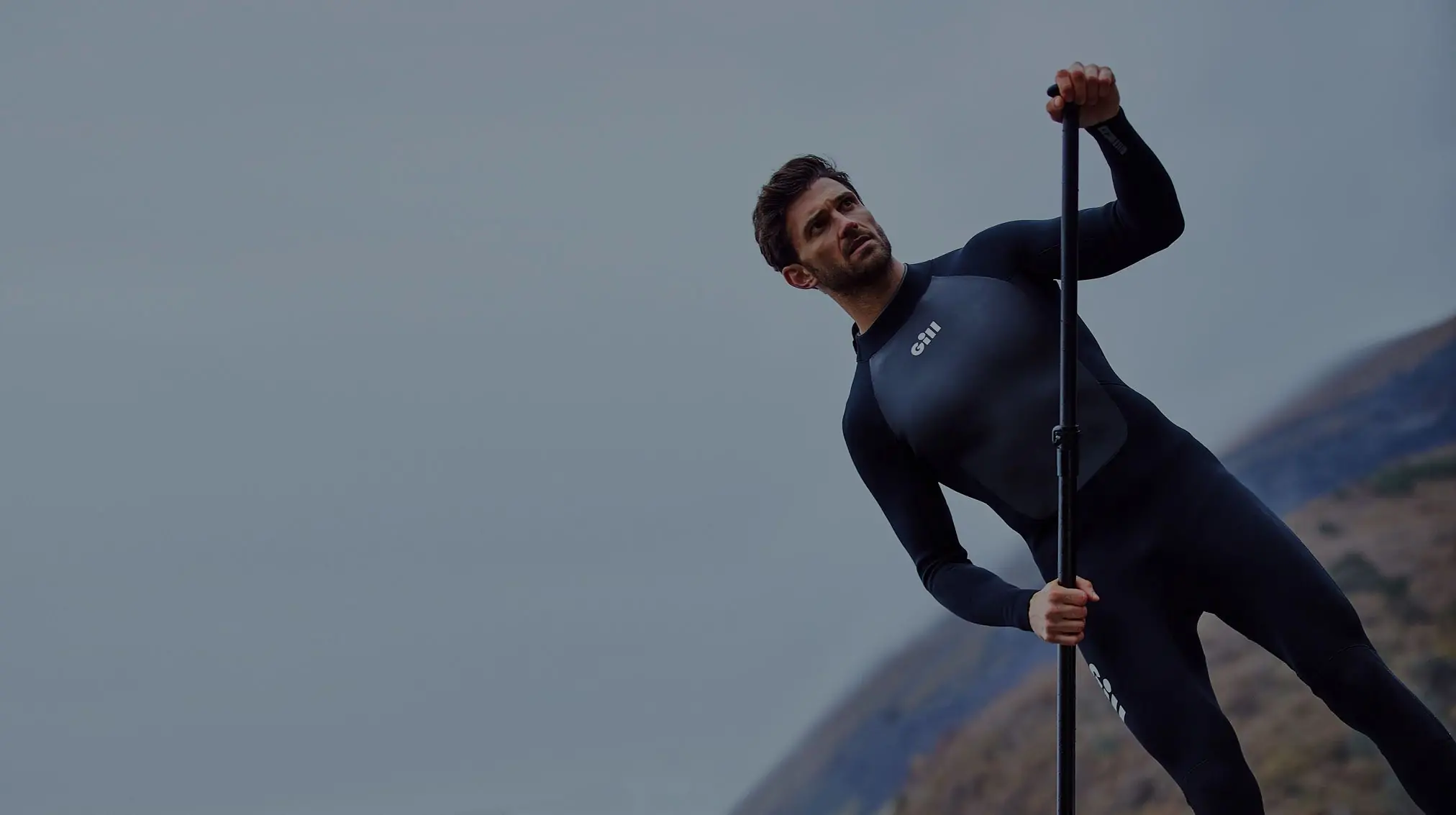On the hunt for a new wetsuit? We understand that choosing a wetsuit can be hard and there are lots of options on the market so, we’ve put together the ultimate wetsuit buying guide to give you the knowledge you need to make the right decision.
How do wetsuits work?
Wetsuits are mainly made from a material called neoprene. Neoprene is a waterproof synthetic rubber that offers excellent levels of durability, UV and heat resistance.
Wetsuits work by trapping a layer of water between your skin and the suit, this is warmed up by your body temperature and in turn, this layer keeps you warm. It’s important that a wetsuit is skin-tight so that the cold water can’t continuingly flush out this warm layer.
How to choose a wetsuit?
When choosing a wetsuit, the most important things to consider are:
End use:
Where, when and what are you planning to wear your wetsuit for? Ask yourself the following questions:
- How cold is it going to be? This will determine how thick your neoprene needs to be.
- What activity are you looking to do? Wetsuits are usually made for specific water sports for example, a wetsuit with short arms will be best for sports which you need full range of movement for such as, dinghy sailing and paddle sports.

Wetsuit fit:
It’s important that you choose a wetsuit size that fits correctly. If you don’t, your wetsuit won’t be able to function how it’s supposed to. So, how do you make sure you’re wearing the right size? It’s important that your wetsuit has a tight, next-to-skin fit to trap a thin layer of water and to prevent cold water flush. This means that there shouldn’t be any bagginess or too much creasing. But you also don’t want the wetsuit to be so tight that it restricts your movement, especially under your arms as this could prevent you from being able to swim properly if needed.
Style:
There are many different styles of wetsuits to suit their many functions, the most common ones are:
- A shorty wetsuit – has short arms and legs and is best for warmer water.
- A Long-John wetsuit – has long legs and no arms, this allows for increased mobility and better paddling. You can layer over or under for added warmth. In our wetsuit range we have the Dynamic Long John and Dynamic Long Jane wetsuit for women.
- A Full Suit wetsuit – they cover your entire body from ankles and wrists up and are best for colder conditions. Like our Pursuit Full Arm Wetsuit.
- 2-piece wetsuits – wetsuits can also come in 2 pieces, for example, our Women’s Pursuit Neoprene Jacket and Leggings. These suits usually have high levels of stretch, making them ideal for paddle sports and dinghy sailing.

Thickness:
The main thing to consider when deciding the thickness of your wetsuit is the temperature of the water you’ll be in. Our Neoprene Usage Guide shows you the temperatures at which our wetsuits perform best:

As a general rule, the thicker the neoprene is, the warmer the suit will be. But, as the thickness increases, the flexibility will decrease. So, you might find that you need to avoid thicker neoprene if you’re practicing a high intensity water sport that requires lots of movement, such as dinghy sailing, as this may affect your performance.
Material:
As mentioned previously, wetsuits are made of neoprene which contains small bubbles of air, these provide insulation. There are different types of neoprene:
- Nylon-Lined Neoprene is the most common material used for wetsuits. This is because the nylon lining glides against the skin, making the suit easier to slip, also it adds protection for the suit.
- Smooth Skin Neoprene is less durable, but its rubbery finish repels the wind and water and absorbs warmth well.
- More sustainable alternatives to neoprene are also available such as, Yulex, which is made from natural rubber and has similar warmth and flexibility to neoprene.
The Gill wetsuit range uses materials which specifically target the needs of the user. Our Pursuit Full Arm Wetsuit benefit from a Mesh Skin chest and back panel with a thermal fabric lining to keep your core and upper body warm. Many of the suits also make use of zoned neoprene technology for extra thickness where it’s needed and Di-Guard neoprene abrasion resistant panels to protect against wear.
Stitching:
To achieve a next-to-body fit, wetsuits are constructed from many panels which are stitched together – these joins are prime spots for water leakage. Therefore, the type of seal and stitching used can influence the warmth of the suit. If you’re going to be in cold water, make sure you choose a wetsuit that has seams which keep the cold water out.
The Gill wetsuit range benefits from a range of stitches and seals depending on end use needs:
- Glued seams are created by gluing panels together before they are stitched, making the seams stronger and more waterproof.
- Taped seams are stronger because an elastic tape has been applied to the inside of the seams to reinforce them.
- Blind is a stitch over a glued seam. The stitch only goes halfway through the neoprene, so no holes are created by the needles, resulting in a watertight seal. The seam is stitched in this way on both sides, so the two sets of stitches interlink. This is very strong, and flexible.
- Flat locked seams are constructed by laying one panel over the other and then stitching through both panels. This is a very durable seam, but the process creates many holes, making the suit better suited to warmer weather.
Our Pursuit Full Arm Wetsuit benefit from glued, blind stitched and taped construction to keep the warmth in and the cold water out.
Zips:
A good wetsuit zip will have big teeth, and a ‘zip flap’, which is a neoprene flap between the zip and the wearer’s back. This prevents the zip from rubbing, and excess water leakage.
Wetsuits with back zips and a long zip puller are the most common and arguably the easiest to get in and out off. This is because it allows the top part of the suit to fully open, giving you more room to work with when you’re getting into the suit. The long zip puller is also easy to reach, allowing you to zip and unzip yourself.
Our Pursuit Full Arm Wetsuit has this back zip entry. Some wetsuits also have front, diagonal back and shoulder zip entries. There are also wetsuits with no zips at all, such as our Zentherm and Zenlite suits. The benefits of these are they have increased stretch technology, making them especially good for water sports which require lots of movement, and there’s less chance of cold-water flush through the zip.

To summarise:
Buying a wetsuit can be tricky, especially when there’s so many choices, styles, lengths, materials and fits out there. Our three top tips for buying a wetsuit are:
- Make sure your wetsuit is a tight, next-to-skin fit but still allows a good range of movement
- Different wetsuits will be best for different sports and conditions
- The thicker the neoprene, the warmer you’ll be
We hope we’ve made the task of buying a wetsuit a little easier for you! Now you’re ready to shop our range of wetsuits online.







